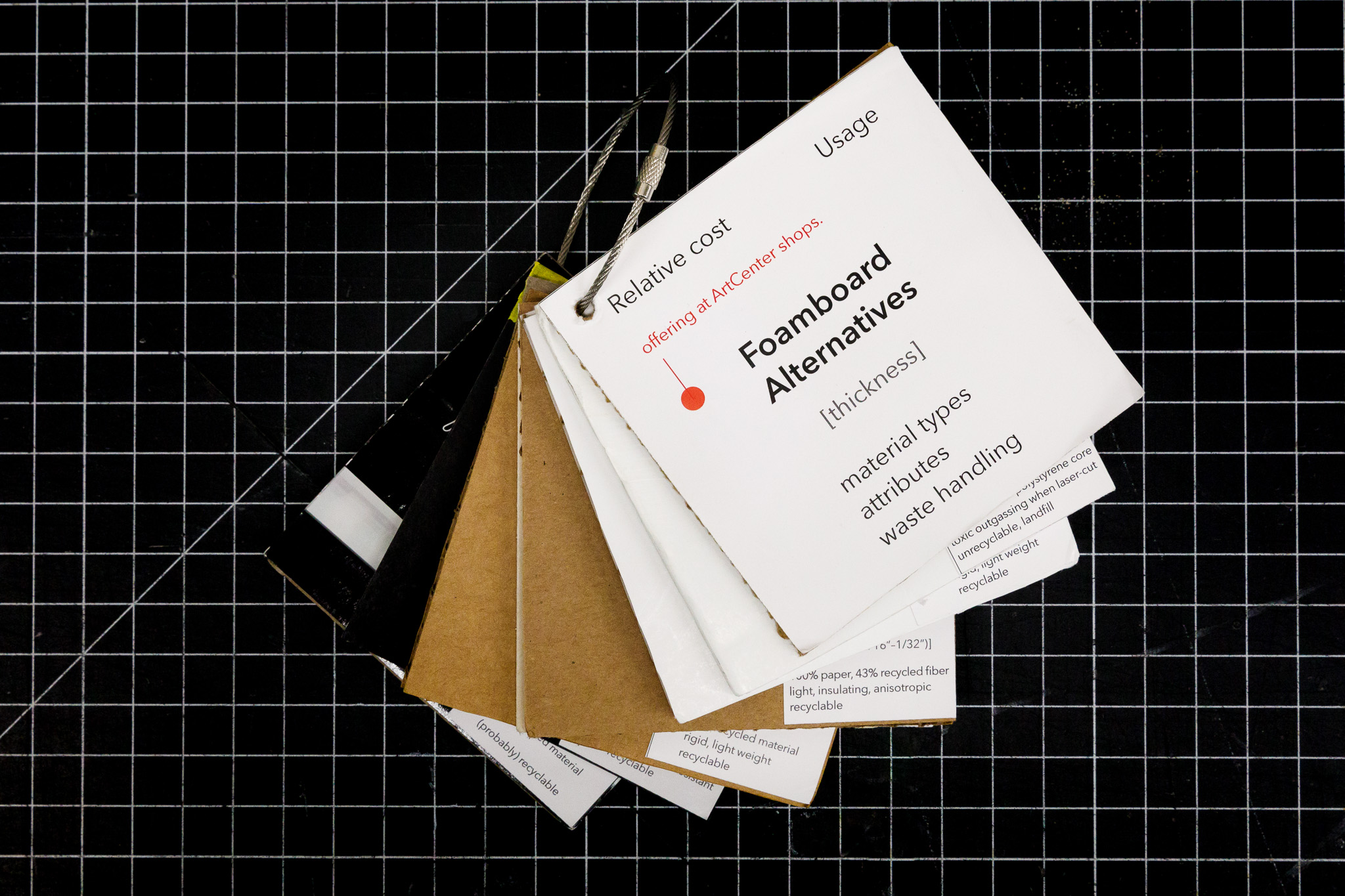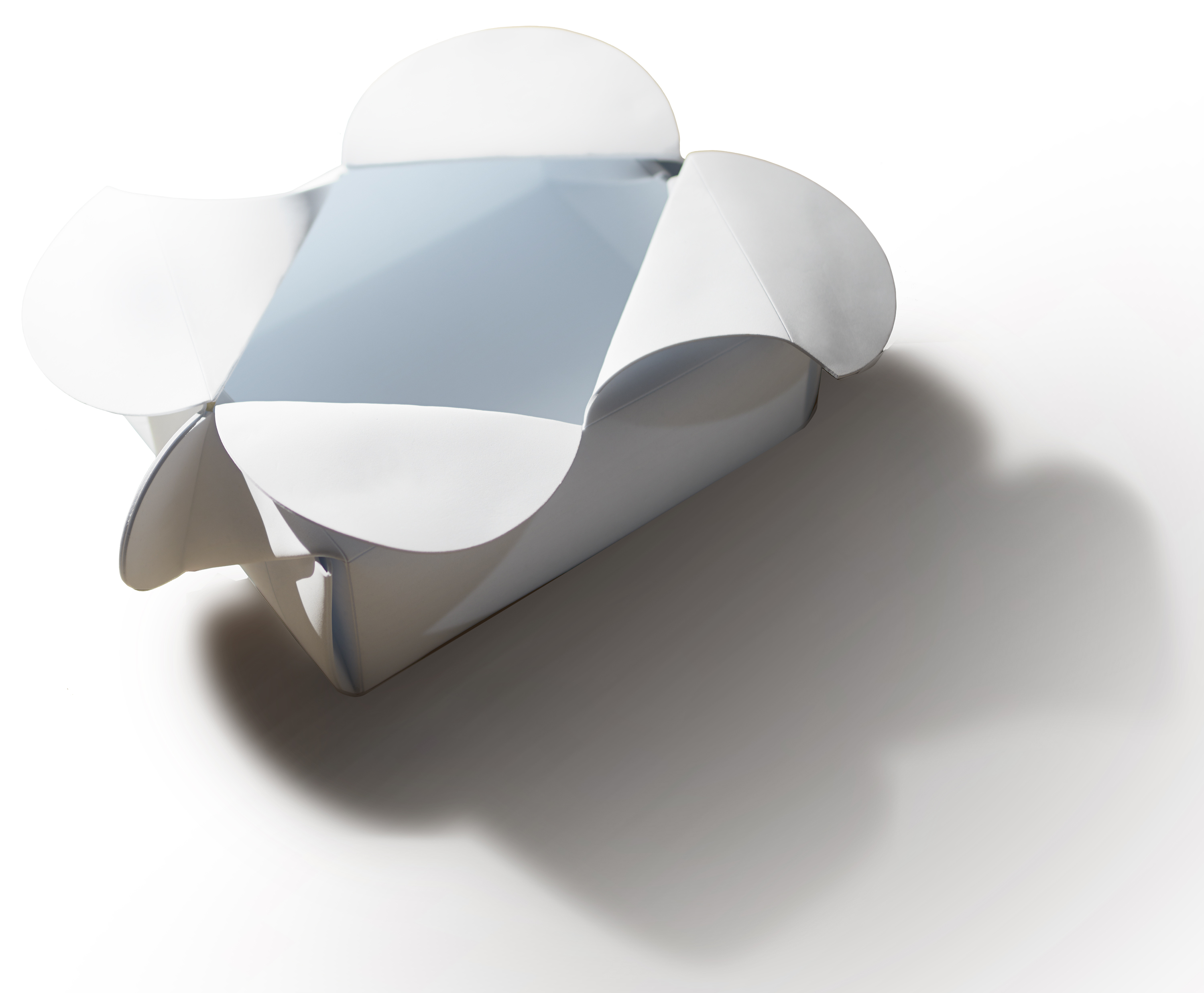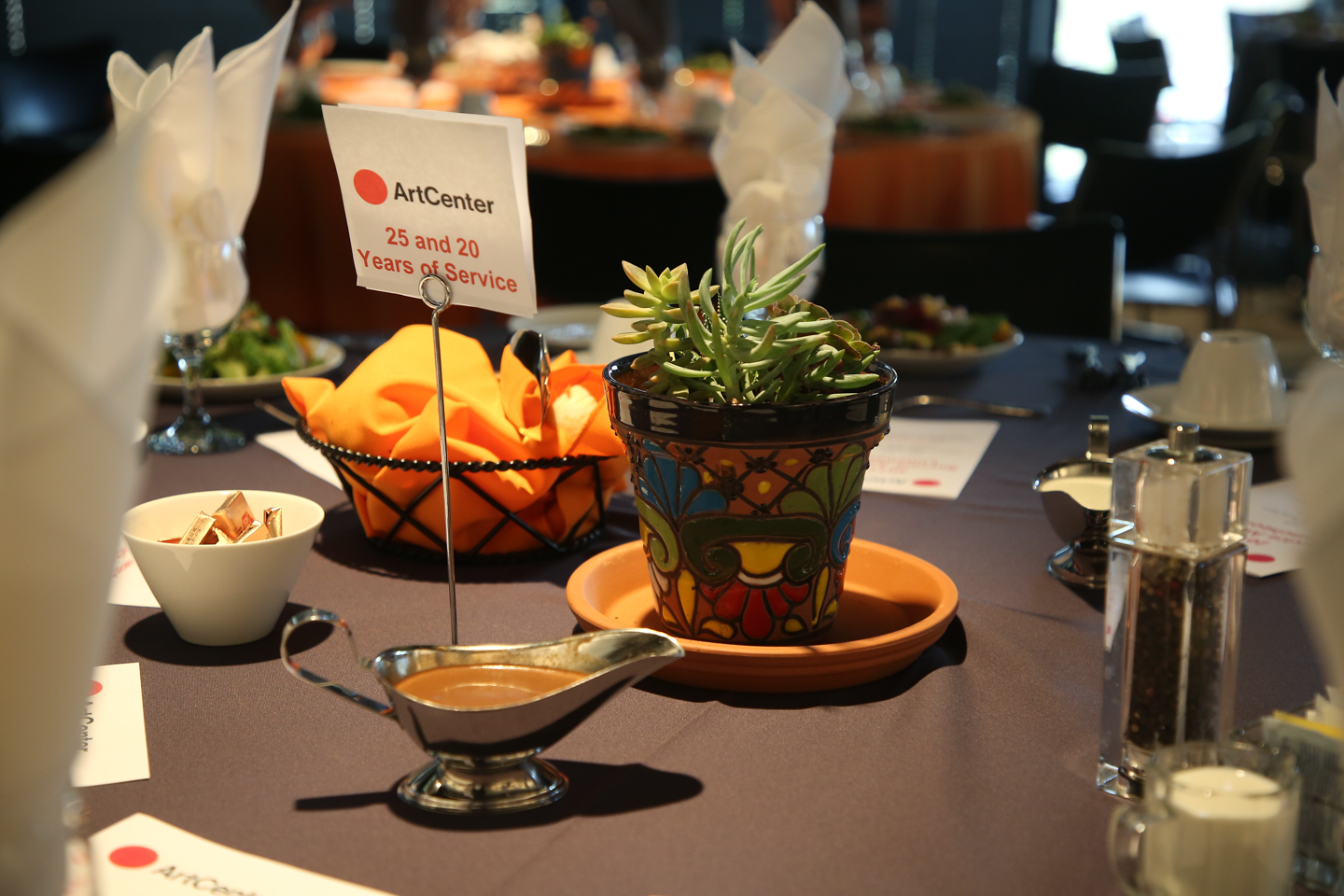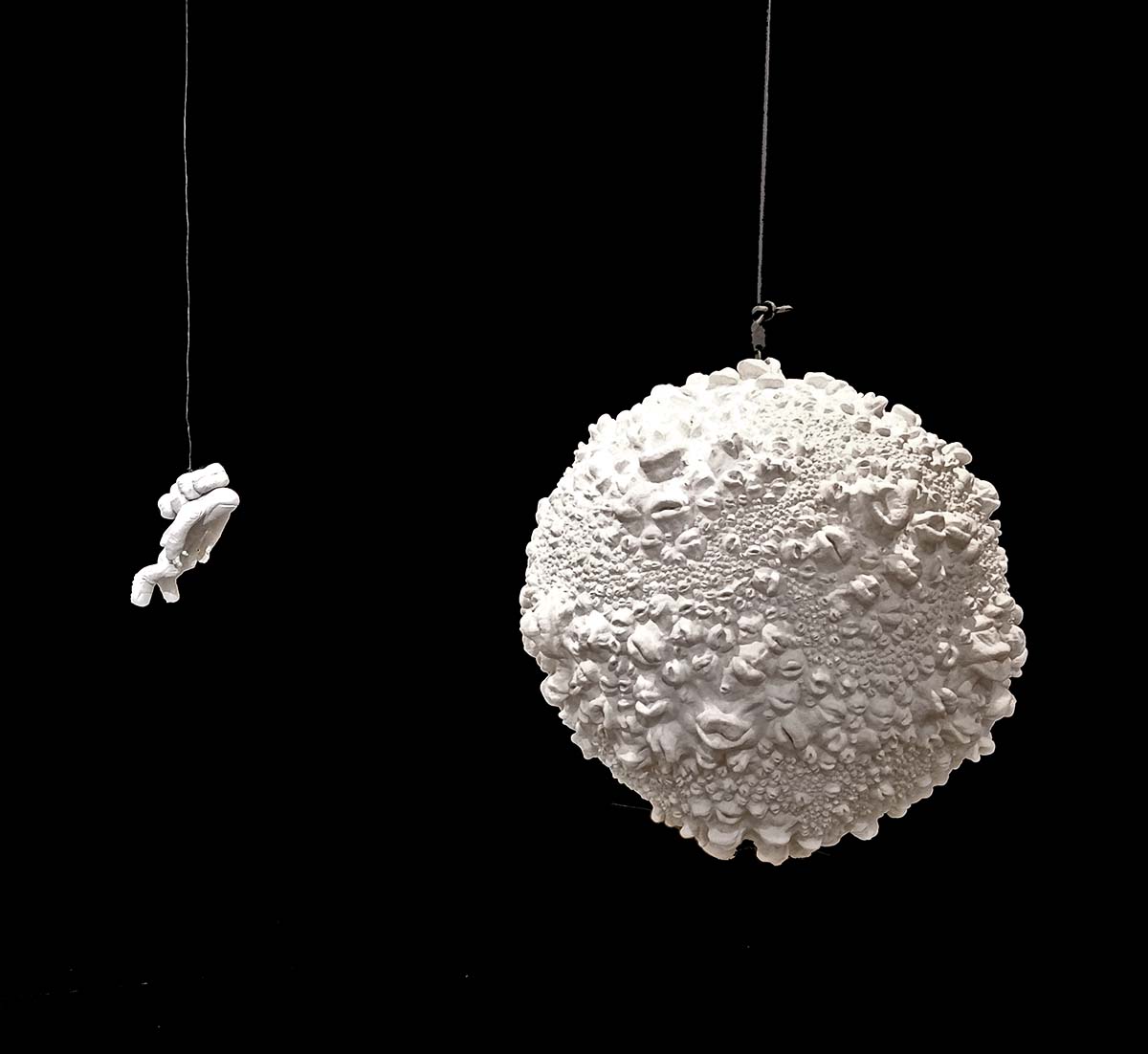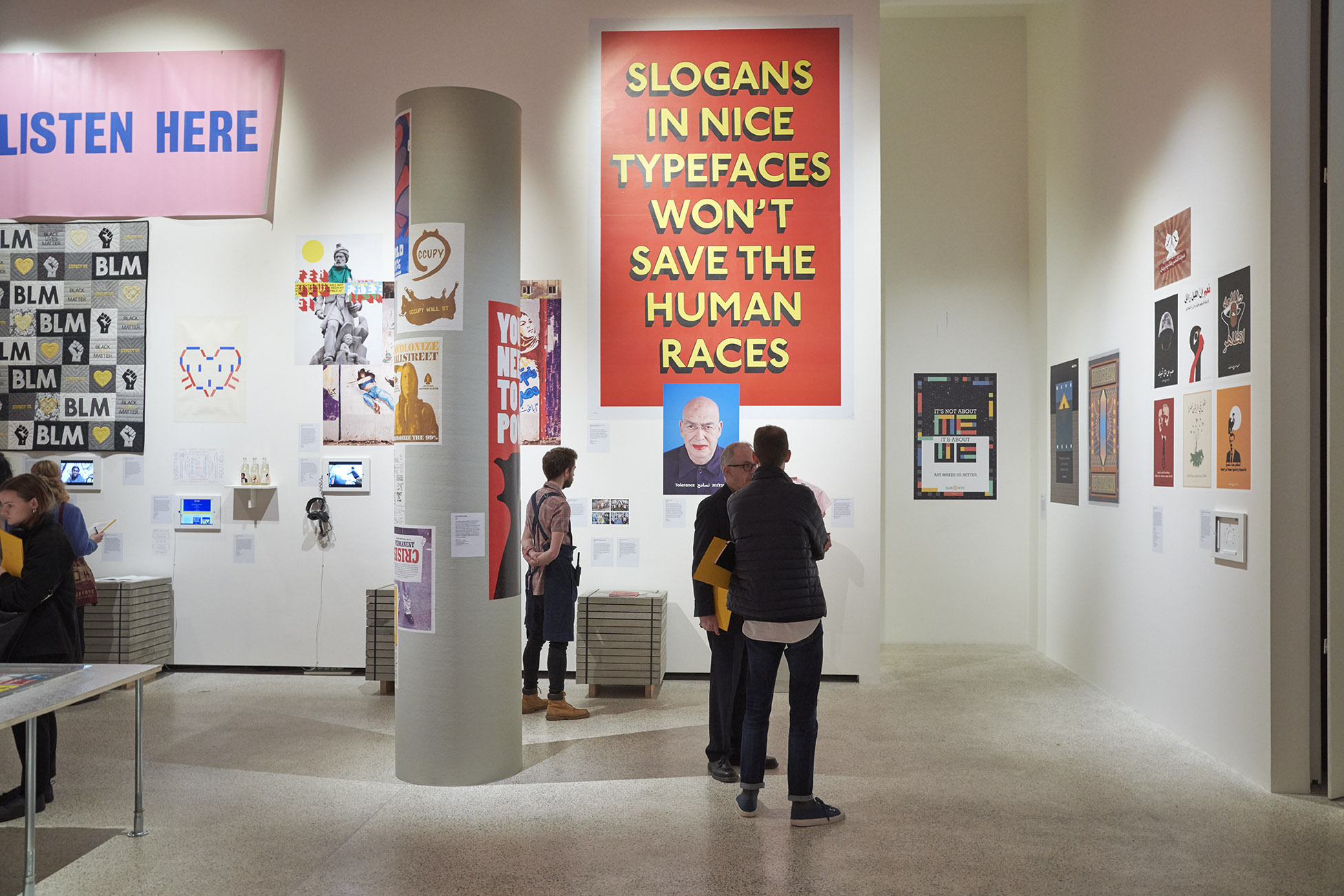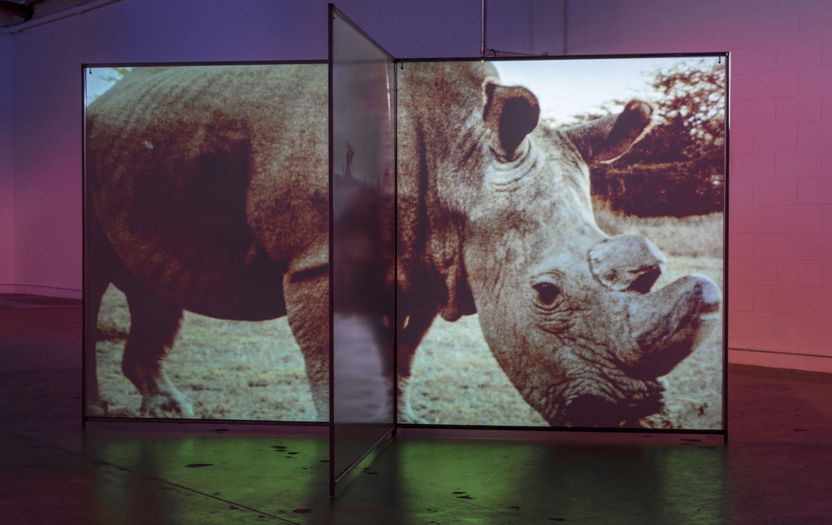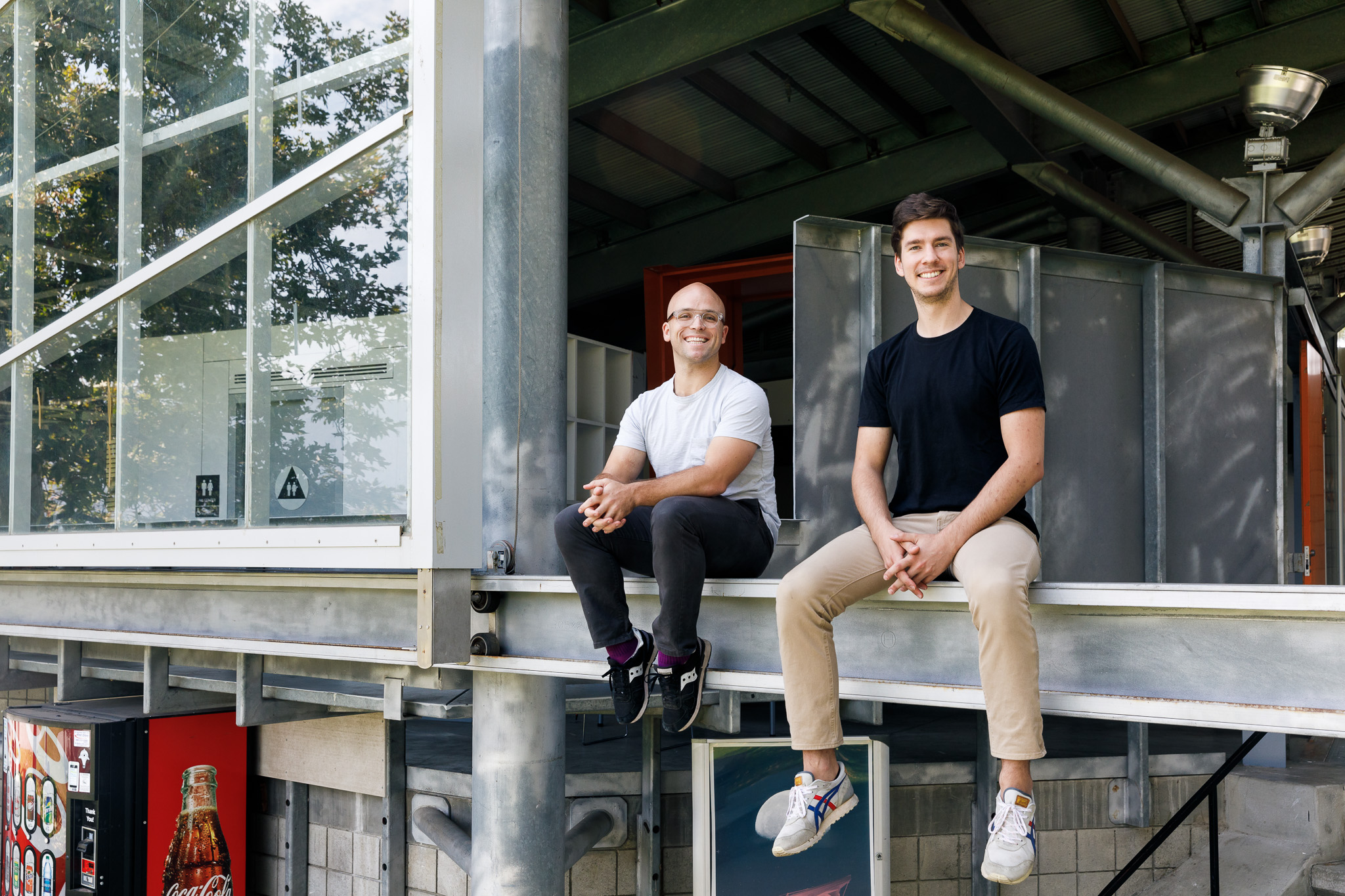
Charlie Neshyba Hodges and David Hollo. Photo by Juan Posada
Graduating from ArtCenter is no mean feat—everyone who satisfies our degree requirements has much to be proud of and this Saturday we will celebrate with 128 hard-working, talented and probably exhausted individuals as they receive their degrees. During each graduation ceremony, we also take the time to recognize a number of exceptional student achievements—students who graduate with honors, students who graduate with distinction, students who completed the requirements for a minor, students who began their ArtCenter careers in one of our Public Programs and students who are veterans of the Armed Forces.
We reserve special recognition for the graduate with the top academic achievement, the valedictorian of the class, and the individual who is the recipient of the Student Leadership Award. We ask these stellar graduates to address their peers at the graduation ceremony. This term, graduates and their friends and family will hear from valedictorian Charlie Neshyba Hodges and Student Leadership Award recipient David Hollo. This exceptional duo have weathered the challenges before them and emerged triumphant. At first glance, it looks like they followed the same path and made a number of the same stops on their journey through ArtCenter—both of them satisfied the requirements for the Bachelor of Science degree in Product Design. Both of them will be graduating with a Designmatters Minor in Social Innovation. Both of them worked as teaching assistants, both of them were nominated to receive the Student Leadership Award and both of them will be addressing their peers at the Graduation ceremony. Yet, in a way that is somehow very ArtCenter, they are also remarkably different.
Enrolling in ArtCenter was the beginning of the second act for Charlie’s career trajectory. A Google search brings up his Wikipedia page that recounts his successful career as a dancer. Performing with Twyla Tharp, im’ij-re and the Sacramento Ballet, Charlie was named Best Male Dancer at the European Critics’ Choice Awards (2003), Best Male Dancer on Broadway (2010), and L.A. Weekly’s Person of the Year (2014). He has appeared on television (including the Tony Awards, Regis & Kelly and The View) and in print (The New Yorker, The New York Times, Vogue and others).
Having already achieved more than many do in a lifetime, to say Charlie flourished during his time at ArtCenter would be an understatement. Described by a staff member as “a force of nature,” Charlie served as a teaching assistant for a number of classes, was a Designmatters representative at the Better World by Design conference, a student competitor at WantedDesign and he was recently named the Western District Student Merit Award Winner for the Industrial Design Society of America (IDSA) and will represent ArtCenter at IDSA’s national conference. He led the renovation of Hillside’s sustainable garden as part of EcoCouncil and was selected to speak at the student-led TEDx ACCD and the BOLD symposium produced by Career and Professional Development. He also managed to find time to teach Design for Dance to 13 year-olds at the Colburn School and slightly older students CalArts.
Awards, accomplishments and accolades appear to rain down on Charlie wherever he goes and whatever he does but the real secret to his success is his dedication to hard work. It is not unusual to find ArtCenter students who work hard and are persistent and tenacious but Charlie takes those traits to a whole new level. “I think that luck is lonely like a one-night stand, while skill provides the benefits of a long-term commitment. And I’m the marrying type,” he tells the audience in his TEDx ACCD talk, recounting how he auditioned and was rejected 41 times before landing a position with the Sacramento Ballet. For Charlie, it has always been about hard work and a positive attitude. As he says, “Failure is a rainstorm: if you just let yourself get wet, you’d realize how much fun it is to splash through puddles, dance in the street, and feel the cool rain on your face.”
Yearning for more wisdom from Charlie? He talks about his ArtCenter experience in this recent video.
The Student Leadership Award fulfills ArtCenter’s vision of educating artists and designers who are not only leaders within their professional fields, but also leaders in their communities. Each term, the College reaches out to the campus population for nominations from peers, faculty and staff. A committee selects the student who most demonstrates leadership through their participation in ArtCenter’s campus life, community outreach, student organizations and department initiatives. The selection committee is often faced with a difficult task of choosing between exceptional students and this term was no exception.
This term’s Student Leadership Award winner, David Hollo, was raised in Budapest, Shanghai and New York and he had his sights on ArtCenter from the time he was 11. He recalls admiring the work of concept artists, car and product designers and marveling at the fact that they all attended the same College. He decided then that he would be a designer—he didn’t know yet what kind of designer, but he knew where he was going to study.
Where Charlie is a force of nature, David is a careful thinker. Described by fellow students as “deeply thoughtful” and “someone who will carry the weight for everyone,” David’s singular focus served him well at ArtCenter, where he carefully devised an educational path for himself focusing on his interest in systems design and planning.
“This institution to me always revolved around recognizing beauty and value in our world, complemented by the relentless ambition to make it better,” David writes, explaining his mindset and approach.
Participating in ArtCenter’s NASA/JPL conference and representing the College the National Academies Keck Futures conference, where he was tasked with introducing design thinking and methodologies to scientists and engineers, David made a point to, in turn, learn as much as he could about scientific investigation and engineering rigor.
David participated in the Designmatters Safe Niños project where a team of students were so moved after visiting Coaniquem, a nonprofit pediatric treatment facility in Santiago, Chile that cares for young burn survivors, that they joined together and worked as a team, organizing themselves like a design studio, instead of working on their projects individually. This collaboration inspired David to join with a classmate and create a student-led course, Design for Transformation, which asked students to look at local problems and use design-thinking to solve them. “The class exemplified how the tools and skills involved in design can have a profound impact on social issues and systemic problems,” he recalls.
David was awarded a prestigious Design fellowship with Dalberg Design, where he conducted research in Kenya, Tanzania, Myanmar and Nigeria, for the Bill and Melinda Gates Foundation. Inspired by the impact design can have on global problems, on his return he worked with CMTEL (ArtCenter’s Color, Materials and Trends Exploration Laboratory) to help develop an interactive materials and trends library. “The increasing environmental impact of humanity makes it more important than ever to rethink how we approach education about the materiality of design,” he observes.
Described by a faculty member as someone who “responds to every situation with quiet but powerful mediated thinking.” and as someone who takes “strategic risks,” David is committed to tackling big global problems. “Be it climate change, poverty, waste, pollution, corruption, the more challenging and gnarly the problem, the more motivated I become.”
Charlie and David are each going to have a hand in changing our world for the better. We just know it and we can’t wait to see it.
We would be remiss if we didn’t recognize the contributions of the other Student Leadership Award nominees. Kristen Hahn devoted much of her time at ArtCenter to serving the community She was a peer mentor, a teaching assistant, acted as the social media director for TEDxACCD and served in student government. She took her role as Illustration Department representative seriously, fielding and addressing individual concerns brought to her by fellow Illustration students. Ultimately, she met with the President and Provost to discuss and find solutions for issues that were consistently raised by students and faculty. Her hard work changed the ArtCenter experience for the better for all Illustration students, now and in the future.
Matt Ravenelle and Andi Choi were nominated for their dedication to serving fellow students, primarily through the ArtCenter Christian Fellowship. Matt founded the group and was singled out for his commitment to serving to his fellow students. “Matt has led the Christian Fellowship with such a humble and guiding heart, he has certainly impacted so many lives at ArtCenter through his service and example. Andi was an active participant in the Fellowship, taking over as President in 2018. She was lauded by students for her kind and generous nature. Supporting her nomination for the leadership award, a student writes, “Andi is a person who is both a listening ear and an organizer who helps ArtCenter students feel connected.”
Saturday’s Graduation ceremony will be held at the Pasadena Civic Auditorium, starting at 10 a.m. Grad Show follows, from 1–6 p.m. in Exhibit Hall B at the Pasadena Convention Center, adjacent to the Civic Auditorium. If you can’t make it to Graduation, we will be livestreaming the event. For more information about everything Graduation, including links for the livestream and our Graduation app, please visit artcenter.edu/graduation.
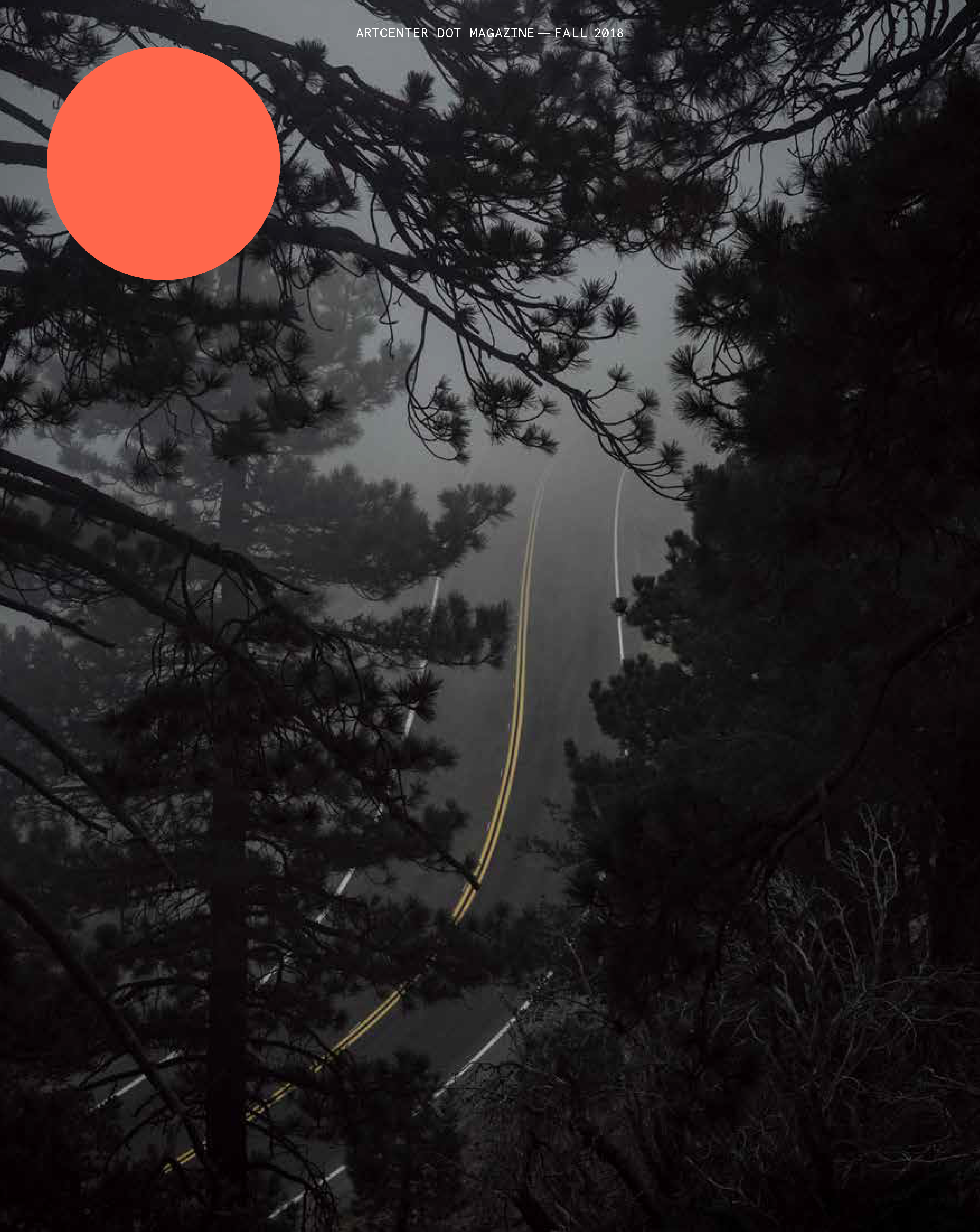 Just in time for Halloween, the Fall 2018 issue of Dot magazine has landed on campus.
Just in time for Halloween, the Fall 2018 issue of Dot magazine has landed on campus.

